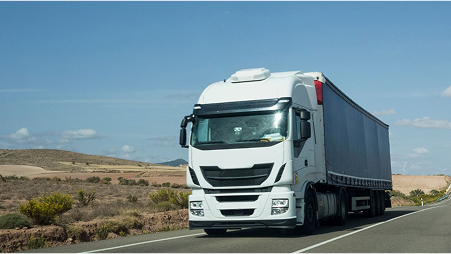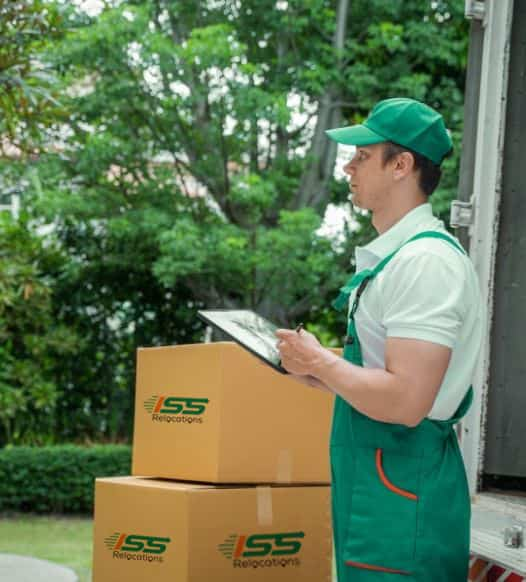
How to Dispose of Unwanted Items Before a Move
Moving can be a stressful experience, and decluttering and disposing of unwanted items can often be overlooked during the process. However, taking the time to assess your possessions and dispose of unwanted items can make your move more efficient and less stressful. In this blog, we will discuss the importance of decluttering and disposing of unwanted items before a move, the benefits of doing so, methods for disposing of unwanted items, and tips for efficient disposal.
Importance of Decluttering and Disposing of Unwanted Items Before a Move
Moving is a great opportunity to start fresh and simplify your life. Disposing of unwanted items before a move can make the moving process more manageable and save you time and money. Here are a few benefits of decluttering and disposing of unwanted items before a move:
Reducing moving costs: The more items you have to move, the more expensive it will be to move them. Reducing the number of items, you need to move can save you money on packing supplies, moving trucks, and moving labour.
Saving time and energy: Sorting through your possessions and deciding what to keep and what to get rid of can be a time-consuming process. Starting early and taking the time to assess your belongings can help you avoid last-minute rushing and scrambling.
Simplifying your life: Decluttering and disposing of unwanted items can help you simplify your life and create a more organized and stress-free living space.
Creating a fresh start: Moving to a new home is a great opportunity to start fresh and let go of items that no longer serve a purpose or bring you joy.
Clear Clutter Before Move
Clear the clutter before your move—learn smart ways to dispose of unwanted items and make your relocation easier and stress-free.
Assessing Your Possessions
Before you start the process of decluttering and disposing of unwanted items, it’s important to assess your possessions and determine what you want to keep and what you want to get rid of. Here are a few things to consider when assessing your possessions:
Categorize your items into essentials and non-essentials: Start by identifying the items that are essential to your daily life and the items that are not. For example, your bed, clothing, and kitchenware are essential items, while your old college textbooks or outdated electronics may be non-essential.
Consider the size, weight, and fragility of your items: Moving heavy or fragile items can be difficult and may require special packing materials or handling. Consider the practicality of moving these items and whether they are worth the extra effort.
Determine the sentimental value of your possessions: Some items may have sentimental value or hold special memories. Consider whether these items are worth keeping or if you can create a more meaningful way to honour those memories.
Methods of Disposing Unwanted Items
Once you have assessed your possessions and identified the items you want to get rid of, there are several methods you can use to dispose of them. Here are a few options:
A. Sell If you have items that are still in good condition and have some value, selling them can be a great way to earn some extra cash before your move. Here are a few ways to sell unwanted items:
Online platforms: Websites like eBay, Craigslist, and Facebook Marketplace allow you to sell items to people in your local area or even across the country.
Yard sales: Hosting a yard sale can be a great way to sell unwanted items while also getting to know your neighbours.
Consignment stores: Consignment stores can be a good option for selling high-end clothing, furniture, and other items.
B. Donate If you have items that are still in good condition but you don’t want to sell them, donating them can be a great way to give back to your community and help those in need. Here are a few places to consider donating your unwanted items:
Charities: Many charities accept donations of clothing, household items, and other goods to help those in need. Some popular charities that accept donations include Goodwill, The Salvation Army, and Habitat for Humanity.
Non-profit organizations: Non-profit organizations that focus on specific causes, such as animal shelters or women’s shelters, often accept donations of specific items that can be used to help their cause.
Local shelters: Local shelters, such as homeless shelters or domestic violence shelters, often accept donations of clothing, bedding, and other essential items to help those in need.
C. Recycle If you have items that cannot be sold or donated, recycling them can be a great way to reduce waste and minimize your impact on the environment.
Electronics: Many electronics, such as cell phones, computers, and televisions, can be recycled to recover valuable materials and reduce environmental impact.
Appliances: Appliances, such as refrigerators and washing machines, can also be recycled to recover valuable materials and reduce waste.
Hazardous materials: Hazardous materials, such as batteries, paint, and cleaning products, should be disposed of safely and responsibly to prevent harm to the environment.
D. Dispose if you have items that cannot be sold, donated, or recycled, disposing of them may be your only option. Here are a few methods for disposing of unwanted items:
Junk removal services: Junk removal services can come to your home and haul away unwanted items for a fee. This can be a convenient option for getting rid of large or heavy items that cannot be easily moved.
Landfills: Landfills are a last resort for disposing of unwanted items that cannot be reused, recycled, or donated. However, it’s important to dispose of items responsibly and follow any local regulations or guidelines for disposing of waste.
Call Our Experts Today
Tips for Efficient Disposal
Disposing of unwanted items can be a time-consuming process, but with a little planning and organization, you can make the process more efficient and less stressful. Here are a few tips for efficient disposal:
- Plan ahead: Start the process of decluttering and disposing of unwanted items as early as possible. This will give you plenty of time to assess your possessions, decide what to keep and what to get rid of, and find the best methods for disposing of unwanted items.
- Start early: Don’t wait until the last minute to start sorting through your possessions. Starting early will give you more time to make decisions and find the best methods for disposing of unwanted items.
- Set deadlines: Set deadlines for yourself to help you stay on track and avoid procrastination. For example, you might set a deadline to have all unwanted items sorted and packed by a certain date.
- Keep track of progress: Keep a list or a spreadsheet of the items you want to get rid of and the methods you plan to use for disposing of them. This will help you stay organized and track your progress.
Conclusion
In conclusion, decluttering and disposing of unwanted items before a move can make the moving process more efficient and less stressful. Assessing your possessions, categorizing them into essentials and non-essentials, and determining the sentimental value of your possessions can help you make decisions about what to keep and what to get rid of. Selling, donating, recycling, and disposing of unwanted items are all viable options for decluttering before a move. By planning ahead, starting early, setting deadlines, and keeping track of your progress, you can make the process of disposing of unwanted items more efficient and less stressful.
Plan Stress-free Move with Top Moving Company in UAE - ISS Relocations

Frequently Asked Questions
What to do with junk when moving to UAE?
When moving to UAE, declutter by donating, recycling, or selling unwanted items. ISS Relocations can assist with junk disposal services, ensuring a streamlined and efficient move.
How do I get rid of unwanted items in my house while moving to UAE?
Sort through belongings and decide what to donate, recycle, or discard. ISS Relocations provides assistance in organizing and removing unwanted items, making your transition smoother.
How do I get rid of junk after moving to UAE?
After settling in, dispose of unnecessary items through recycling centers, donation programs, or junk removal services. ISS Relocations helps with post-move cleanups and furniture disposal to ease your transition.
How to get rid of clutter when moving to UAE?
Declutter by sorting items room by room and deciding what to keep, donate, or discard. ISS Relocations offers expert advice and logistics support to ensure a clutter-free and organized move.
How to move with less stuff to UAE?
Minimize your load by selling unused items, donating clothes, and recycling non-essential belongings. ISS Relocations provides packing strategies and downsizing solutions to make your move cost-effective and efficient.
Why is it so hard to get rid of things?
Emotional attachment, fear of waste, and sentimental value make decluttering difficult. ISS Relocations helps by offering professional packing services and disposal options to simplify decision-making.
How to get rid of junk in house?
Separate junk into categories for recycling, donation, or disposal. ISS Relocations offers junk removal services, ensuring responsible and hassle-free disposal before your big move.
Moving Company - Recent Blog
Stay informed and prepared for your next move with our latest blogs on moving services in the UAE. From expert packing tips to international relocation guides, ISS Relocations brings you up-to-date insights to make your moving experience smoother, safer, and stress-free.










